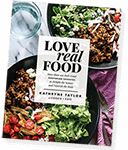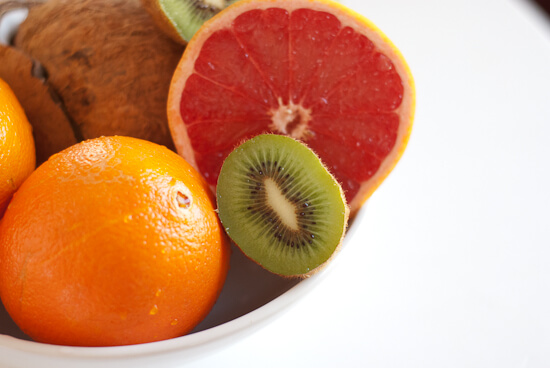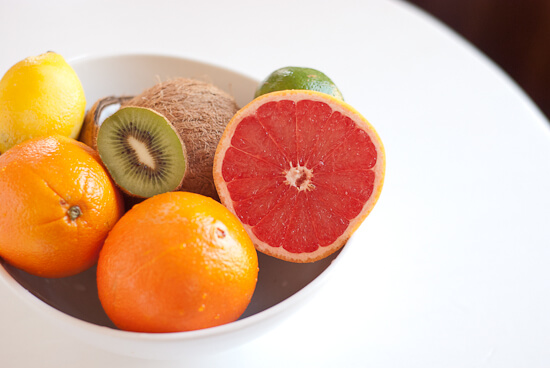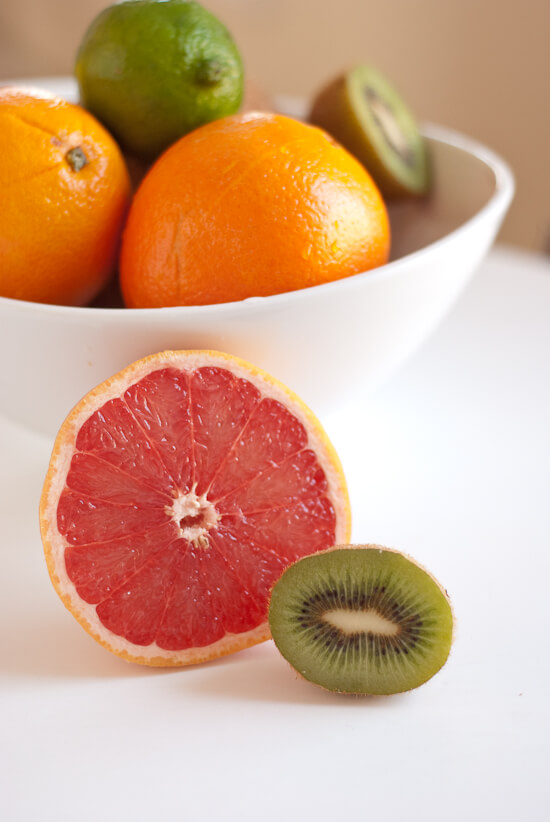After last week’s discussion on eating local, I’ve come to a compromise with my resolutions. Locally grown fruits and vegetables are hard to come by in Oklahoma, and I can’t can what I didn’t grow last year. A girl’s gotta eat, and this girl really likes to eat.
Hence my compromise: For now, I’ll focus on eating locally grown produce when possible. If I can’t source it locally, I’ll at least try to buy produce that’s in season, preferably organic.
Once spring rolls around, I’ll start making regular visits to the farmers’ market—even if that means I have to drag myself out of bed earlier on Saturday mornings. I intend to learn more about the food co-op that my ever-wise reader, Tracy, suggested. I can’t wait to grow my own herb garden (hopefully it will fare better than this one!) so I can have fresh herbs on hand during the warmer months. Home canning is an intriguing solution that is experiencing a modern-day renaissance, according to NPR and my readers. I was surprised that so many of you suggested canning! I wouldn’t know where to begin, but I suspect my grandmother knows a thing or two about canning, so I’ll ask her!
Given the plethora of produce in an average grocery store, the transition to buying only in-season fruits and vegetables is going to be tough. Growing up, our dining table seemed to offer the same fruits year-round: apples, oranges and bananas. Getting used to eating in-season fruits and vegetables will be a stretch for me. How am I ever going to give up fresh tomatoes for part of the year?
Fortunately for us, the winter bounty offers an abundance of colorful, juicy citrus fruits, like grapefruit, lemons and limes, and exotic fruits like coconuts and kiwi. The winter fruits feature colors I would normally associate with spring and summer; their punchy hues seem to be nature’s gift to the winter doldrums. Cheers to winter fruit! Rather than beat myself up for buying out of season fruit, I intend to get excited about in season treats, which inevitably taste better, anyway. It’s just a matter of educating myself on the difference. If you’re interested, here’s a more thorough list of delicious winter produce.
Where do you stand in the argument for eating in-season produce? To what extent will you go to eat fresh, locally grown fruit and vegetables? Do you feel that my compromise is reasonable? Let’s hear it!
Whole Foods and Vegetarian Recipe Blog
Our cookbook, Love Real Food, is here! Get your copy ↣

Footer
About ⋄ Contact ⋄ Cookbook ⋄ Recipes ⋄ Shop ⋄ Subscribe
Cookie and Kate receives commissions on purchases made through our links to retailers. Affiliate details »
© Cookie and Kate 2010 - 2021. All rights reserved. Cookie and Kate is a registered trademark of Cookie and Kate LLC.
Accessibility Policy ⋄ Comment Policy ⋄ Nutrition Disclaimer ⋄ Photo/Recipe Policy ⋄ Privacy Policy



 Vegetable enthusiast. Dog lover. I'm probably making a big mess in my Kansas City kitchen right now.
Vegetable enthusiast. Dog lover. I'm probably making a big mess in my Kansas City kitchen right now. 

Kacy
That list is really helpful! I will try to stick to that more. I love blood oranges.
elizabeth
It’s a hard topic. I absolutely believe in eating locally and seasonally. It’s better for the environment, for our bodies, and it supports local farms. However, we live in a modern world, which brings major advantages, like global commerce. We can eat tomatoes in the winter, because they are growing somewhere in the world (even somewhere else in the US). Isn’t that what advances in technology and transportation are all about, better living? Honestly, I’m not sure about the answer to that, but it is something to think about. Thanks for bringing the discussion up!
kate
You’re right, it is really tough to choose in-season fruits and vegetables when fresh produce of all kinds is available year round. I’m all for better living, but I’m also concerned about sustainable living. I want to choose foods that provide maximal nourishment and minimal damage to our environment, so that’s why I’m making a point to choose local, in season produce more often. I can’t say I’ll be perfect at it, and I’m not about to grow all of my food myself—I’m just making an effort to move in the right direction. Thank you for your comment, Elizabeth!
Chiara
I loooove fruit, probably the best thing of moving to Peru is getting to eat all these exotic fruits on a daily basis. I am always trying something new and I have been here a year and a half. Definitely agree about eating locally.
xoxo
kate
Oo, I bet there are tons of fruits and vegetables that I’ve never heard of in Peru! It must be the growing season down there, right?
Elizabeth
I really try to eat locally and seasonally when I can. I think our culture has bred us to think that we can have whatever we want when we want it, but without really considering the consequences of our decisions. Increased carbon emissions and the domination of industrial agriculture over small farms are just two of the most obvious effects of eating that tomato in January. Plus, food just tastes better when it’s in season! I think there’s something to be said about respecting nature’s way of telling us what’s good right now. But, all of this is said from a Californian — we can get just about anything grown relatively locally throughout the year because of the weather. I imagine that if I lived elsewhere, I might be singing a different tune!
Love your blog by the way, beautiful photos! Your pictures of those winter fruits are just beautiful.
kate
Thank you, Elizabeth! You brought up one of the most compelling reasons to eat food when it’s in season—it tastes better! So much better! I wish we had access to locally grown produce in Oklahoma like you do in California. That would certainly make eating responsibly a little easier to do!
Melissa
I think when you save tomatoes for summer or cherries for spring it makes eating those foods so much more enjoyable. They taste amazing when in season and the fruit becomes a special treat since you don’t get to eat it all year. Besides every season has its delicious fruits and veggies, you just have to explore what is available for each season.